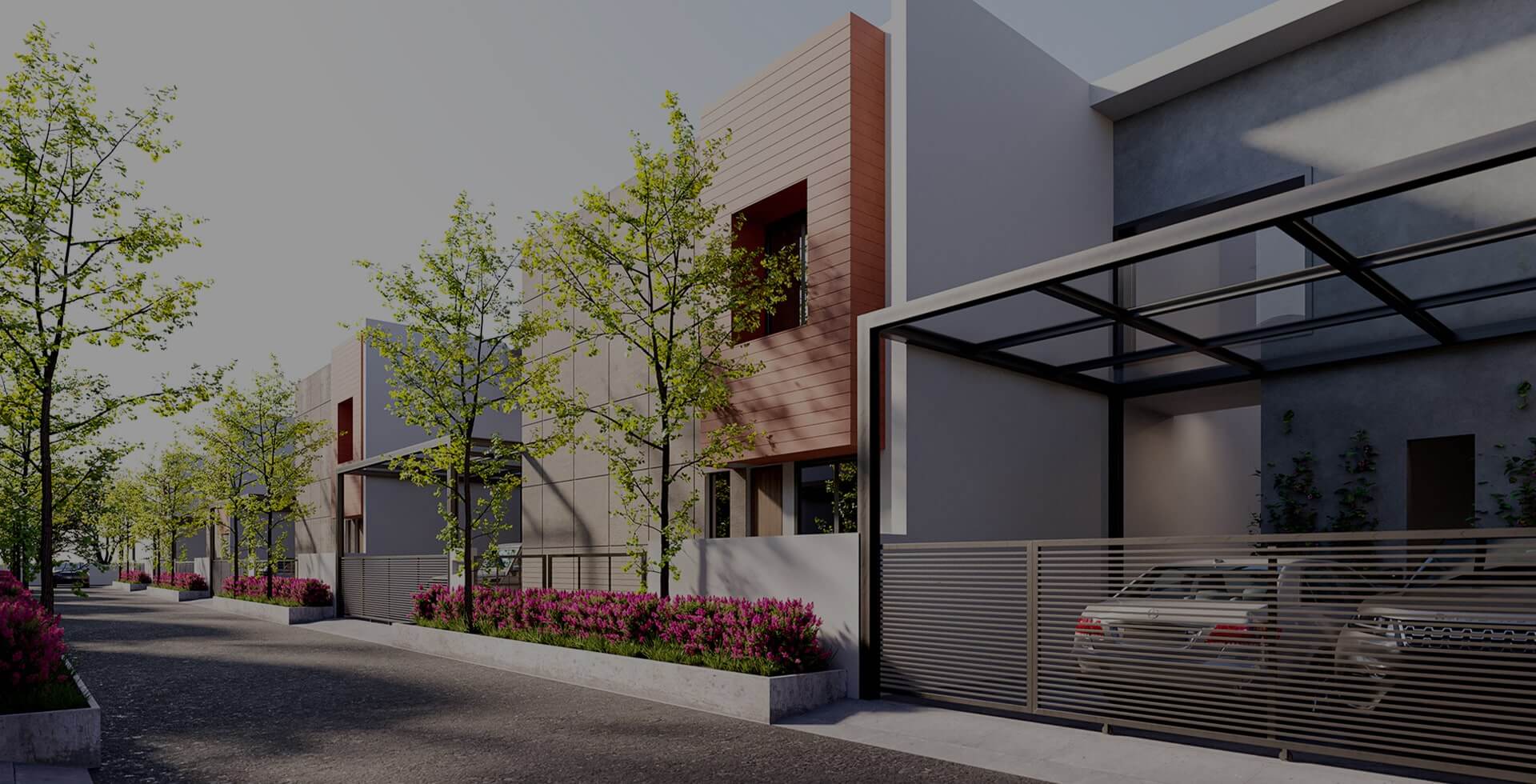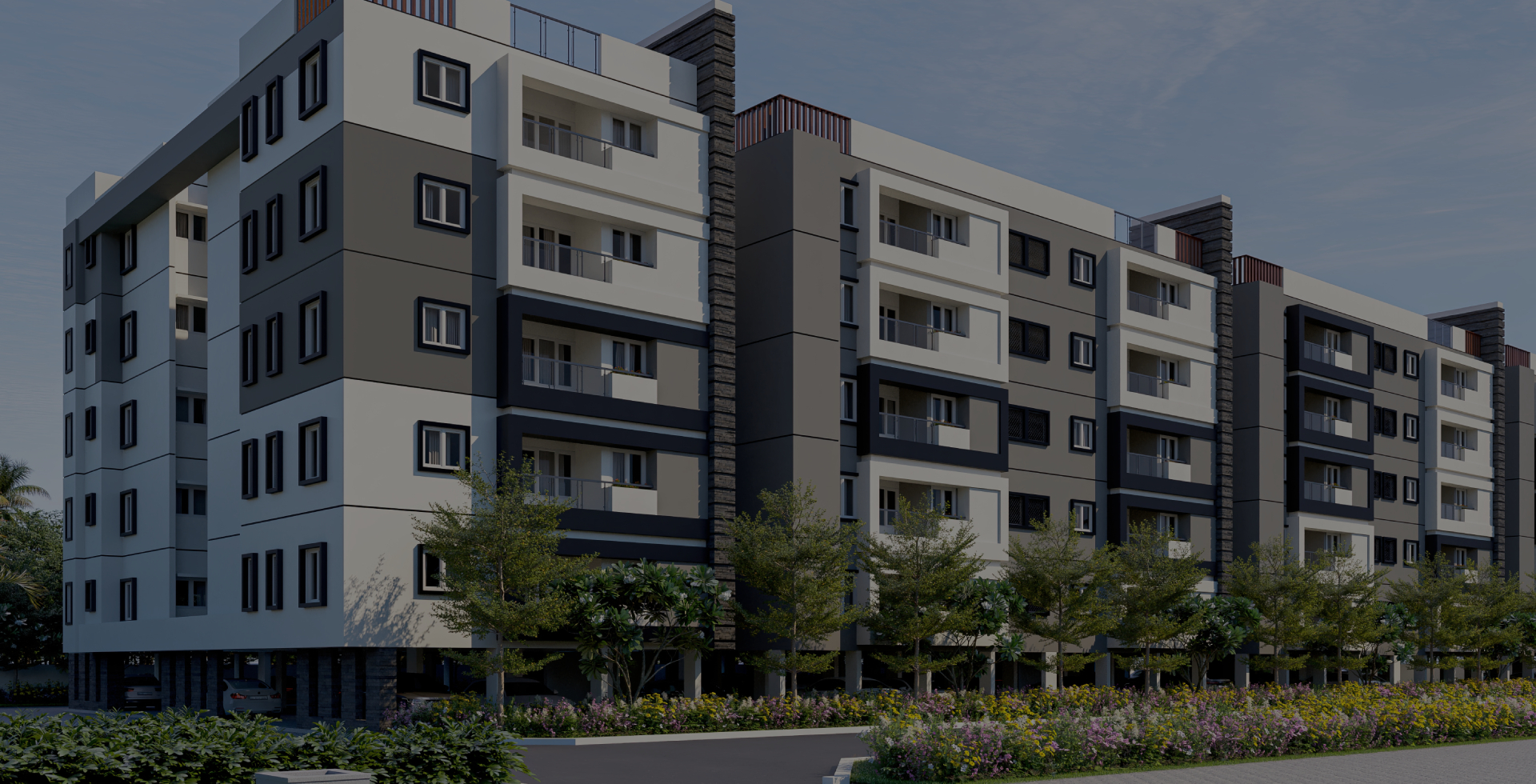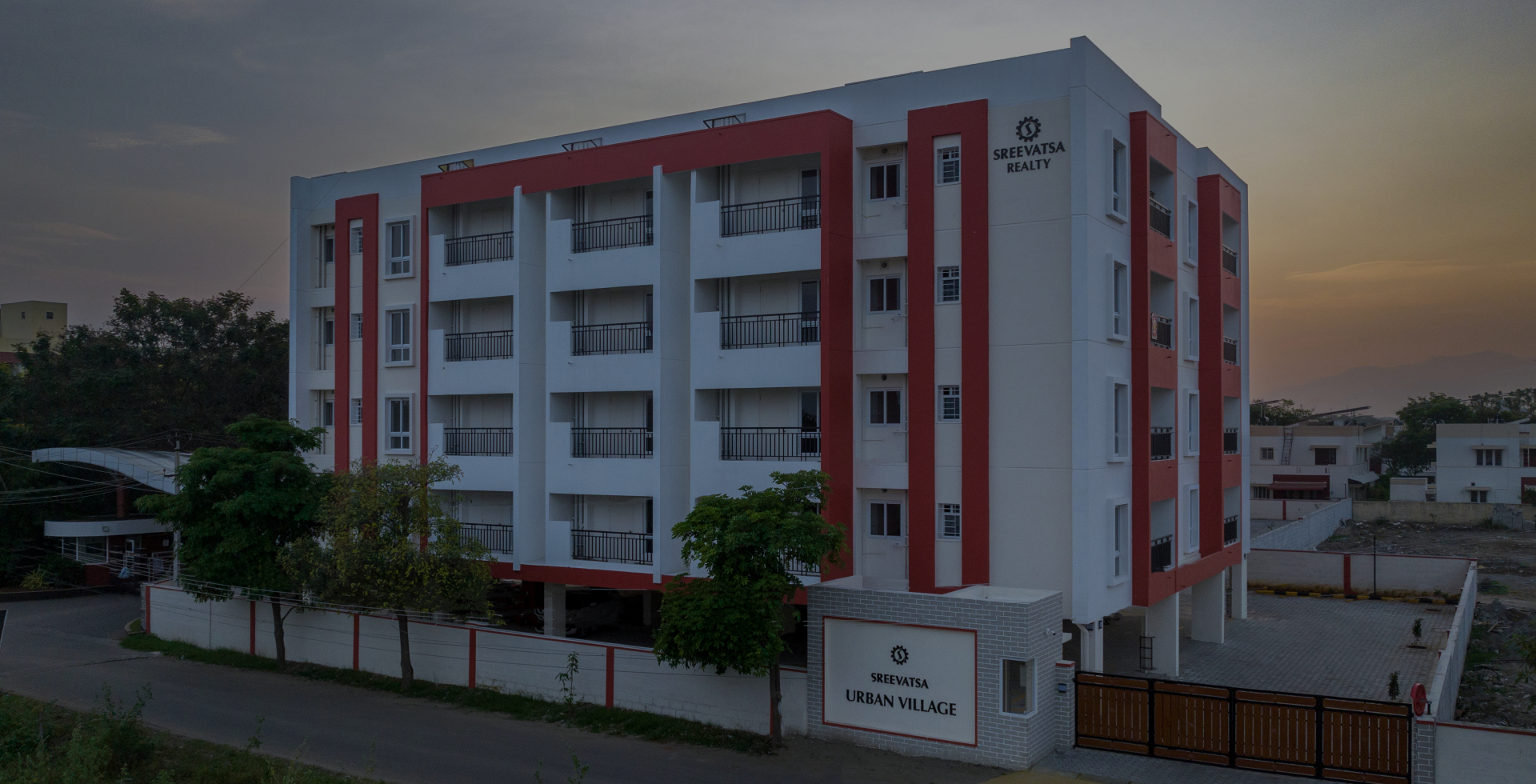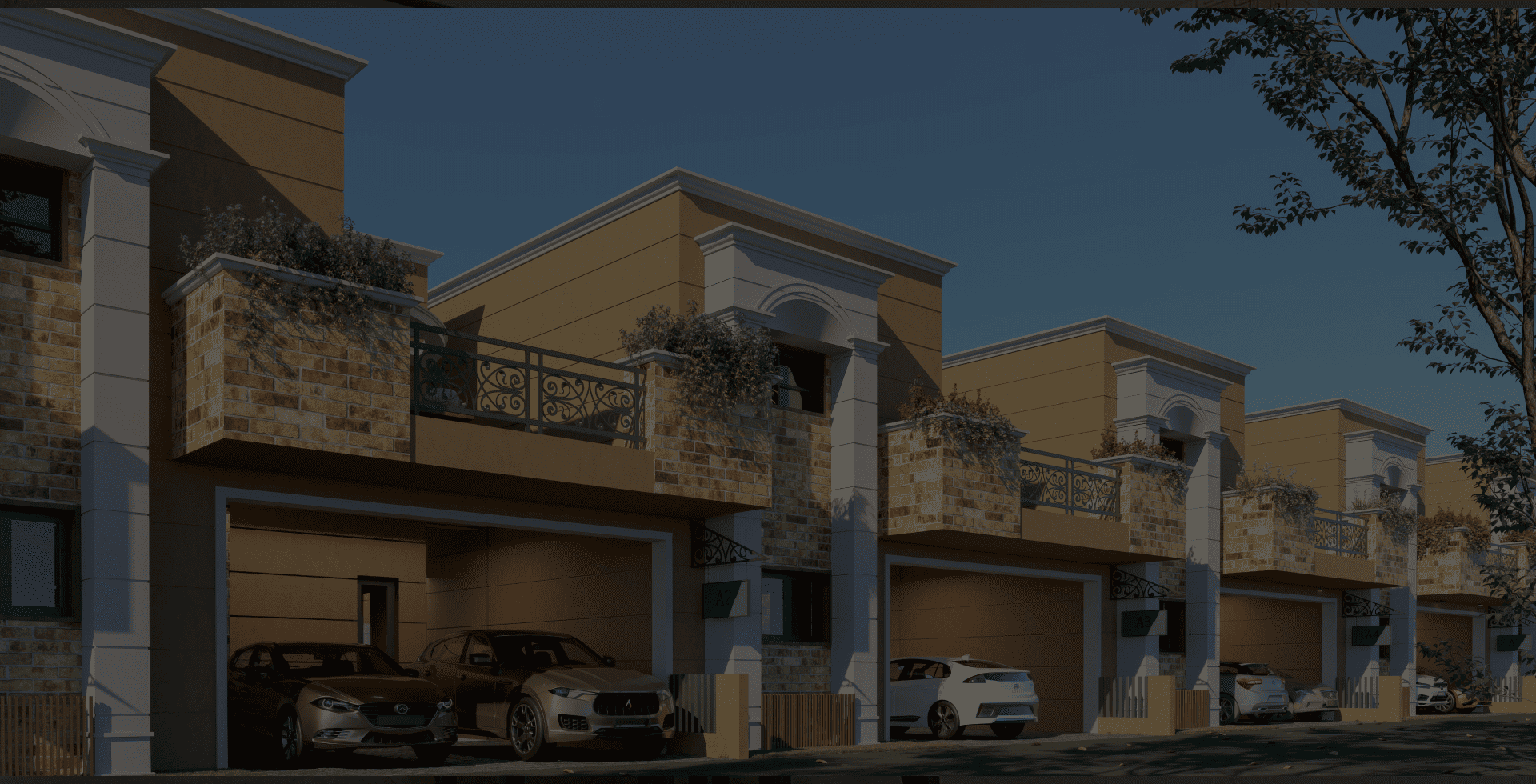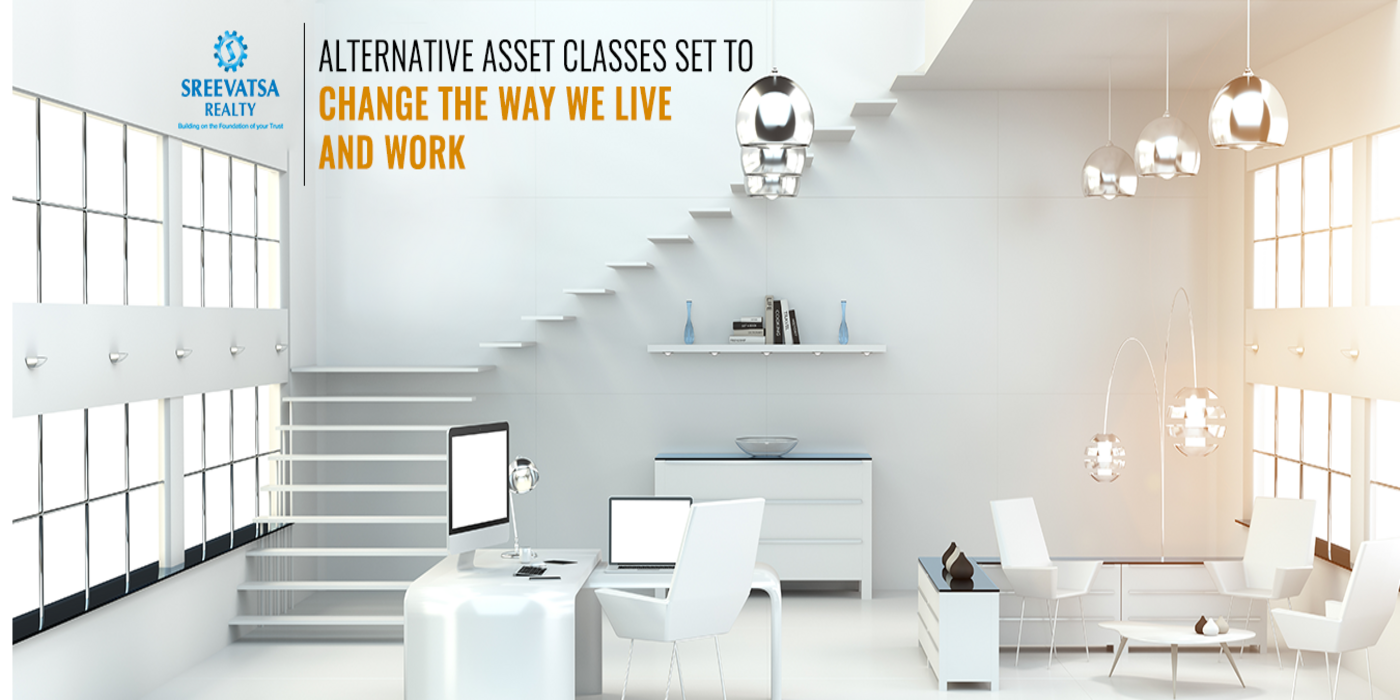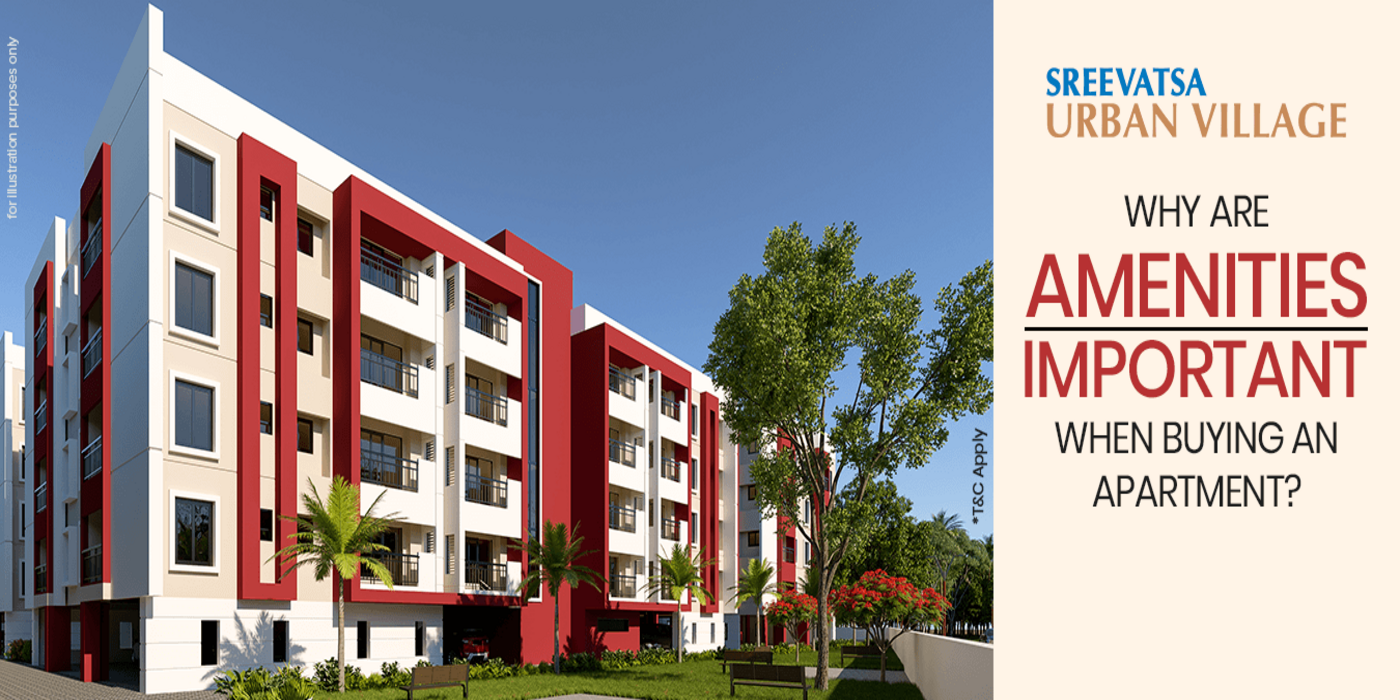Category: Blogs
For Blogs
Home Loan Rates Lowest In 15-Years
Home Loan Rates Lowest In 15-Years
The RBI’s announcement is good news for homebuyers as interest rates will come down to around 7%. For existing borrowers, SBI’s interest rates on home loan up to Rs 30 lakh will automatically come down to 7% from the existing 7.4%. For women borrowers, the rates would be further lowered by 5bps. HDFC has already brought down its rates to 7.50%. To improve the transmission of rates, the RBI had forced banks to link their interest rates on priority sector loans – including home loan to an external benchmark rate (EBR). Most of the banks chose repo rate as their EBR. Housing finance companies and those banks that have not linked their home loan rates to the repo will also be driven by competition to follow suit.
Borrowers having repo-linked loans can expect their EMIs to fall from July 1 as these loans are reset once in every quarter. However, those who have MCLR-linked home and auto loans, they may not get immediate relief. Even if some banks announce a reduction in MCLR, loan EMIs may not fall immediately as MCLR-linked rates are reset once or twice in a year.

1. Pradeep Aggarwal, Founder & Chairman, Signature Global and Chairman, ASSOCHAM – National Council on Real estate, Housing & Urban Development expressed, “Now the situation for homebuyers might improve further as home loan interest rates are expected to come down further. Affordable housing will benefit the most as the buyers of this segment are very particular about the EMIs. With historically low EMIs, people will go out to buy and thus increase the demand.”
2. Manoj Gaur, MD, Gaurs Group and Chairman, Affordable Housing Committee, CREDAI (National) added, “The move for sure which should help the real estate borrower in the long run if passed on and implemented by all banks and financial institutions. But, we are seeing that the benefit is not being passed on and the effect on actual lending rate is little or almost negligible. So, till the time RBI makes it mandatory for banks to reduce lending rate at the same time, these reductions will have negligible effect on real estate market which is reeling under COVID-19 situation.” Source: realtyplusmag.com
Planning To Buy A Residential Property? Know Why Coimbatore Is The Best Place To Invest Right Now!
Planning to buy a residential property? Know why Coimbatore is the best place to invest right now!
At present, investing in residential property is emerging as a significant achievement in people’s lives. The term ‘Residential Investment” refers to the process of buying a new house for your own living or renting out to earn income. Investing in the right residential property at a perfect location brings a plethora of perks for the investors now and in the future. According to real estate statistics, owning an apartment in the developing areas increases the value over time.
Coimbatore, the second largest metropolitan city of Tamil Nadu, is in a top position in the ranking for the best places for real estate investment. The city offers residential property with low budget investment right now that can yield huge benefits later. Are you interested in knowing why the best time to invest in Coimbatore is NOW?
The scope of investing in the apartments of Coimbatore
Coimbatore, also referred to as ‘Manchester of South India’, is being developed as a smart city by the Government of India. The city is growing at a fast pace in terms of economy, infrastructure, job opportunities and living standards. With the IT and ITES sector established in the prime location of the city, the professionals are settling down here from various parts of the country. The scope of development in the city increases the demand for residential properties and elevates the market value.

What makes Coimbatore the right place to live?
Salubrious Climate: The city’s location on the banks of the Noyyal River and the Western Ghats gives a pleasant climatic condition throughout the year which makes living a great experience.


Educational Hub: With 70+ engineering, arts and science and medical colleges, Coimbatore acts as the educational hub for major areas around. In addition to this, there are popular academic centres and research institutes.
IT Parks: The IT and ITES sectors have been springing up in areas like Saravanampatti, Kalapatti and Avinashi Road of Coimbatore. Some major software companies that have their offices set up here are Amazon, HCL, Bosch, Wipro, CTS, etc.


Healthcare Centres: Coimbatore is well known for its growing medical tourism and renowned hospitals that offer quality healthcare at a reasonable cost for all.
Entertainment Spots: There are incredible number of tourist attractions in and around the city. Some of the significant highlights are malls, amusement parks, falls, Isha Yoga Centre and much more, which attracts potential number of visitors from across the country and all over the globe.


Connectivity: Well-connected road, rail, and airways via three national highways, train services and an International Airport are the highlights of the Coimbatore city.
Safety & Security: Being a semi-metro, Coimbatore never fails to ensure protection of its people.


What are the top localities in Coimbatore for residential investment?
As per the search terms of the home buyers, more than 10 localities are listed as top destinations to buy a residential property in Coimbatore. Among various areas, Saravanampatti and Avinashi road stand out with its infrastructural development. Investing now in the residential properties developed in and around these spots can benefit you with high capital appreciation in the next 5 to 7 years.
10 Dos And Don’ts To Ensure Your Claim Of HRA Tax Exemption Against Rent Paid Is Not Rejected
10 dos and don’ts to ensure your claim of HRA tax exemption against rent paid is not rejected
What you must remember while claiming tax exemption of HRA or while filing income tax returns.
In April 2017, an income tax tribunal ruling on rent receipts grabbed many eyeballs. This is because it rejected the HRA exemption claimed by a salaried individual for the rent paid to her mother.The tribunal rejected the claim on the grounds that there is no proof to substantiate that payment of rent has actually happened apart from rent receipt which could have been easily obtained by the taxpayer from her mother without paying the rent.Here are some list of documents and dos and don’ts which you must remember while claiming tax exemption of HRA from your employer or while filing income tax returns (ITR).
In April 2017, an income tax tribunal ruling on rent receipts grabbed many eyeballs. This is because it rejected the HRA exemption claimed by a salaried individual for the rent paid to her mother.
The tribunal rejected the claim on the grounds that there is no proof to substantiate that payment of rent has actually happened apart from rent receipt which could have been easily obtained by the taxpayer from her mother without paying the rent.
Here are some list of documents and dos and don’ts which you must remember while claiming tax exemption of HRA from your employer or while filing income tax returns (ITR).
1. You have must have a valid rent agreement. The rent agreement must mention all the relevant details such as amount of monthly rent, time period of rent agreement, any utility bills to be paid by you etc. Archit Gupta, CEO & Founder of Cleartax.com says, “Make sure that there is a signed agreement between you and the landlord even if they are your parents. The agreement must mention the premises rented by you, other charges such as utility or property tax if payable by you. “
2.In case of a shared accommodation, then along with the above mentioned details in the rent agreement, it should also mention number of tenants co-sharing the flat, ratio in which rent and how utility bills are to be divided.
3.Make your rent payments preferably via banking channels instead of cash. Using banking channels helps to provide an electronic trail of money for the transactions occurred.
4.You must ask for receipt for the rent paid every month irrespective of the channel used for making payments. Pinky Khanna, Director, People Advisory Services, EY India says, “It is mandatory to furnish rent receipts to the employer for claiming HRA exemption for the monthly rent paid more than Rs. 3000 per month. “
5.In addition to rent receipts, if your payment exceeds Rs. 1 lakh annually, then it is mandatory for you to provide the PAN of your landlord to your employer to avail the full benefit of HRA exemption. It helps you to lower your TDS deduction.
6.In case PAN is not available, then your landlord must be willing to give you a declaration to this effect. Confirm this before taking house on rent so that you are able to avail the benefit of HRA exemption from your employer. Along with the declaration, you also need to obtain ‘Form 60’ duly filled by your landlord, in case PAN is not available. You need to submit these to your employer.
7.’If you do not provide PAN of your landlord then, you cannot claim tax exemption for HRA from your employer while withholding TDS on salary. While Income Tax Act does not restrict the employee from claiming tax exemption for HRA while filing returns but there will be mismatch in the salary income reported in the Form 26AS by your employer vis-a-vis that reported by you in your return. This may prompt the department to send a communication seeking response regarding the mis-match’, says Khanna.
8.There might be circumstances where an individual pays higher rent than what is actually mentioned on the rent agreement and difference is paid in cash. If that happens, tax exemption will be calculated only on the basis of rent receipt furnished by employee mentioning the amount paid. Any amount paid over and above the rent receipt shall not be considered for the purpose of exemption by employer, warns Khanna.
9.Gupta further adds that that you must physically reside in the house mentioned by you while claiming HRA exemption. In case your parents are landlord, make sure that they include the rental income too while filing their returns.
10.Remember to deduct tax at source (TDS) @ 5%, from the rent paid to your landlord if you are paying rent above Rs. 50,000 per month. Interest at 1% per month is levied in case you forgot to deduct it and 1.5% per month where TDS is deducted but not deposited. It would also attract the penalty of Rs 200 per day for the period of delay, says Khanna.
You can claim tax exemption up to 100% of the actual HRA received provided all the conditions to claim relief have been satisfied by you.
Author: Preeti Motiani – ET Online
The Rise Of Buy-To-Let Properties
The Rise Of Buy-To-Let Properties
The skyrocketing property prices make homeownership out of reach for a large percentage of India’s population. Millennials and Gen Z, in particular, prefer to take property on rent, rather than buying. This has resulted in heightened demand for rental houses, subsequently promoting more realtors to turn towards the buy-to-let model. Buy-to-let properties offers the latest growth avenue for investors and home buyers in the realty portfolio. These can include family rental homes, student accommodation facilities and co-living spaces.Buy-to-let properties are the need of the hour as they can address not only the urban housing woes, but also the affordable housing crisis that India faces today. Additionally, they can narrow the demand-supply gap that exists in the rental housing sphere.Another advantage of the buy-to-let-model is that it is open for disruption. Active involvement of multiple stakeholders is paving the way for tech-based innovation, reimagining and redefining the real estate industry in the country. The surge of co-living arrangements, for example, has added a fresh spin to the traditional shared living concept.
Co-Living; The Future Of Urban Living
Up until a few years ago, the term ‘co-living’ was rarely heard of outside the real estate sector. Today, co-living is looked at as the future of urban living in India and worldwide. Located near business centres and educational institutes, co-living facilitates the housing needs of the young population. A typical co-living setting comes equipped with fully-furnished rooms and offers a host of standard and special amenities, including WiFi and DTH connectivity, access to fitness rooms and games room, and tech-enabled security systems, among others.Moreover, residents can also avail daily meals, housekeeping facilities, laundry and concierge services, and on-demand maintenance support. Co-living is enabling a true plug-and-play experience, allowing people to move in immediately with just their personal belongings.The key highlight of co-living lies in its unconventional approach to utilizing spaces. In most cases, co-living residents share areas like the kitchen, terrace and the lounge. This strategic balancing of private and shared spaces saves both resources and costs, and also facilitates social interactions, group dining and other communal activities.Co-living may be in a nascent stage in India, but it is encouraging more real estate developers and financiers to embrace the buy-to-let model. The residential real estate space is expected to have a positive transformation buoyed by widespread adoption of this trend.
If You Find A Better Investment Other Than Sreevatsa Viswa & Vedh, Please Ignore This Blog.
If you find a better investment other than Sreevatsa Viswa & Vedh, please ignore this blog.
Choosing where to invest your money can be a bewildering task. The options are so many that sometimes you will be exhausted just by looking at the long list. You may even have to burn the midnight oil to understand what your options are, how much fund you can invest, who is trustworthy and who is not, and the list keeps going. You should not rush into something when there is a huge amount of your time, energy and money involved. After all, anything you possess is a result of you working your fingers to the bone. Finding out what you want can take some time and it is good. If you ask us for good returns, our bet is always on a house. Read further to know why.
Ride in a luxury car
Of course, if you are fancying a fancy ‘something’, it’s a luxury car. It has its perks, like the number of eyes you will attract when you take it out for a ride. But, owning a luxury car has its downside too. The resale value is usually lesser than expected and the maintenance costs a lot. And, if you have children at home, we should warn you that not all cars are kid-friendly. Because you cannot afford to damage the seat’s cushion or handle food spilling all over, not to mention what it would cost you to get your car look polished again.
Starting a business
If you think about business, franchising particularly is becoming popular now. Starting a brand new business demands a lot of groundwork, but getting an already established brand in your locality/city is comparatively more straightforward. There are two sides to every coin. In new business, there is a lot of time before you can finally settle down and make profits. On the other hand, franchising necessitates following the policies of the brand, thus restricting you from doing anything innovative. You cannot predict the economic climate, so this is not exactly the right place for your investment if you are looking for returns earlier than expected.
Fly across the world
You may think what else would be the better returns than life lessons. Travelling gives you stories, adventure and independence. It can help you escape for a while, but what happens when you come back to reality? Now, that is quite a question. It has its disadvantages too: being away from home, lack of income and zero returns on your investment except for the lessons, of course. Travelling is beautiful and at times, necessary too. However, we do not recommend you to spend a considerable chunk of money on it.
Invest in the stock market
This is a big-league and the risk is as big as the market itself. Share prices rocket and plummet multiple times in a single day which means you cannot see if you are going to take something home or not. While massive failure is not seen often, it may take years to recover from such a situation. Brokerage in this investment can jeopardize the profits you gain. In a nutshell, we do not recommend an inconsistent investment.
But buying a house…
We would, any day, say that a house is the best in the market. The perks of owning a residential property at this price range are uncountable and having huge returns on it is the most favourable for you. Other than that, there is always rental income coming in. The house becomes a nest egg that your future generations can depend on.You will be the proud owner of a fantastic house. There is always, always a place for you to go to no matter what. The feeling of a community develops well when you move in and this ties you to your people. Did we mention the tax benefits?Spending around INR 70 lakhs* will buy you not just any home, but a luxury apartment at Sreevatsa Viswa & Vedh. With the most amazing amenities in a secured environment, you can live the life of a villa without missing out on the comforts of an apartment. Sreevatsa Viswa & Vedh is located in Vilankurichi, a fast developing hub of the city with easy access to all important parts of Coimbatore like multispecialty hospitals, popular educational institutions, international airport, entertainment centers and IT zones. Life and luxury begins here! Like we said in the beginning, if you can find a better investment than an apartment at Sreevatsa Viswa & Vedh at this price in this location, then please forget that you read this blog.
Alternative Asset Classes Set To Change The Way We Live And Work
Alternative asset classes set to change the way we live and work
India’s obsession with real estate as an investment choice is a well-documented-data-based history over the last decade. Immovable assets have been traditionally the go-to option for domestic investors,While Indian’s preference for real estate continues to impact their investment choices even now, the ongoing decade has been a witness to the emergence of alternative asset classes in this category that have remarkably changed the we live, work and stay.It’s a behavioural change with the dominance of the millennials in our workforce.Millennials, who already make up almost 45% of the workforce in white-collar jobs, are interested in build-to-suit working and living options above anything, and that makes a world of difference in the investment world, too. As India transforms itself to meet the requirements of a large young, agile and on-the-go population by way of offering flexible workin g setups and quality living options, it is opening technology-driven alternative investment models for investors to thrive on.
Co-working: Flexi spaces to touch 140 million sq ft mark by 2025
India is one of the largest flexible workplace markets in the world, with nearly 27 million sq ft of space, with an operating capacity of 400,000 seats spread across six major markets, including Mumbai, Delhi-NCR, Chennai, Bengaluru, Pune and Hyderabad.The speed of growth in this category has also been remarkable. At nearly 13 million sq ft, co-working spaces claimed an 8% share in the cumulative Grade-A leasing activity during 2016-Q3 2019. Space take-up by flexible space operators has grown by 500% during 2016-18, and is likely to grow by 25-30% year-on-year for the full year 2019.While flexi-working spaces are predicted to touch nearly 140-million sq ft mark by 2025, the number of operators in t he segment is likely to double in the next five years from the existing over 300 players. By the same period, the user base is also likely to grow to three million.Co-working, as we see it, is the answer to the traditional leasing, where companies had to pay huge security deposits, but they were still obliged to stick with a work place offering questionable quality issues. Since the co-working concept is a win-win situation for all parties concerned — the operator, the owner and the corporate— it could become popular in emerging tier-II cities in India also as it expands itself.
Co-living: Shared living to become Rs 1-trillion market in the next five years
Even as the traditional office is making way for co-working, the rental housing market in India is aligning itself as the concept of co-living is seen gaining traction among Indian young population, which is, unlike its processors, not welcome to the idea of making “adjustments”. Based on the fact that India’s young population with a higher disposable income favours value experiencing over ownership, we have ample reason to believe in the growth potential of the co-living segment amid India undergoing a digital transformation that is not only impacting how we work but also how we live.The facts that nearly 40% of Indians millennial workforce is migrants and their number is set to increase to 7 million by 2023 give us further reason to expect co-living would become more of a rule than an aberration at a time when demand pattern is changing continuously.At a nascent stage as it is, the co-living market India is likely to become a Rs 1-trillion market in the next five years, with 5.7 million beds, as millennials opt for shared accommodations providing better affordability and convenience and community feel than the traditional and largely unorganized rented homes, hostels and paying guests (PG).Betting on that growth, several global institutional investors such as Goldman Sachs, Nexus Venture Partners, Sequoia, Warburg Pincus, etc., have forayed into the segment here in the recent times. Much higher levels of activity could be seen here in future because of the unmet demand, especially in the student housing segment.In countries such as the US and the UK, where student housing is in an advanced stage, it helps investors earn double-digit yields when compared to the other commercial real estate segments such as retail and office space. This segment could bring investors in India double-digit returns of over 12% while returns in the commercial segment are restricted between 7-9.5%.To put it succinctly, as India’s changes track to become more of a shared economy where community building and the need for utilization for resources gains higher prominence than the tendency to own assets, we have every r eason to believe alternative investment categories would stand side by side with mainstream options. Author: Gautam Saraf, Managing Director – Cushman & Wakefield, Mumbai
SBI’s Festive Offers: Should You Go For The Bank’s Repo-Linked Home Loan?
SBI’s festive offers: Should you go for the bank’s repo-linked home loan?
While the transmission will happen faster, it can make EMIs more volatile and pinch you when rates increase
Ahead of the festive season, SBI has announced a slew of offers for retail loans. Waiver of processing fees on car loans, longer repayment tenure for personal and education loans and attractive interest rates on home, car and personal loans — are among SBI’s offerings.But the home loan product that is linked to the repo rate lending rate (RLLR) where the lending rate is linked to the RBI’s repo rate-is one of a kind that catches the eye. It claims to be an attractive offering, as a fall in the RBI’s repo rate in the coming months would immediately translate into lower lending rates for borrowers, as against the existing MCLR structure where transmission happens with a lag.But how sweet are SBI’s home loan and other deals?
Cheaper home loan
SBI introduced the repo-linked loan product for home loans from July this year. Lending rates are benchmarked against repo rate lending rate (RLLR), which changes every time the RBI tweaks its repo rate. RLLR changes from the 1st of the following month in which the RBI changes its repo rate.For instance, RLLR was 8 per cent since July. With the RBI’s 35 bps repo rate cut in August, SBI’s RLLR will reduce to 7.65 per cent from September 1.The effective home loan rate is arrived marking it up by a spread – RLLR+40 bps or RLLR +55 bps (depending on the credit score). Hence for home loans upto Rs 75 lakhs, the effective lending rate for borrowers with good credit score works out to 8.05 per cent currently.Comparing offers by other banks and even SBI’s own MCLR linked home loan product (effective lending rate of 8.65 per cent), the repo linked home loan appears attractive, as it charges among the lowest lending rate.But before you opt for it there are other points you need to consider.
Double-edged sword
Given that any change in repo rate immediately reflects on the lending rate (in the following month), in a scenario where rates are falling, borrowers gain more than under the existing MCLR regime. Under MCLR, lending rates are reset only at intervals corresponding to the tenure of the MCLR. For instance, in the case of home loans benchmarked against the one-year MCLR, lending rates are reset every year. When the RBI cuts repo rate, banks don’t reduce MCLR immediately. It happens with a lag. Even when MCLR is cut, the benefit of it is transmitted to borrowers only when the loans are reset.However under SBI’s RLLR, changes to lending rates will happen immediately (within a month). While in a falling rate cycle, this may be alluring to borrowers, when the RBI’s starts to hike repo rate, borrowers may not be too pleased. Lending rates will go up faster than under the MCLR regime, pinching borrowers more. Given that home loan is a long tenure product of 25-30 years, there will be many rate cycles—both up and down. So as a borrower, don’t base your decision on the current fall in rates alone.
Frequent changes in EMI
Under a regular home loan product, one that is linked to your MCLR, your equated monthly instalment (EMI) on your home loan is fairly stable. Given that the reset happens every year there is more predictability in your EMIs. Even when the lending rate is reset based on the latest MCLR, banks usually change the tenure (lower the tenure in case of fall in rates) of your loan rather than EMI—unless you specify otherwise. This in effect keeps your EMI steady. Under SBI’s RLLR however, a minimum 3 per cent of the principal loan amount should be repaid every year. Interest charged on the loan is serviced monthly, based on the lending rate effective at that point in time. Hence your EMI changes every time there is a change in RBI’s repo rate (in the following month). Given that interest rate cycles have become relatively shorter over the past two to three years, your EMIs could change more frequently. If you prefer predictability of EMIs, then SBI’s product may not be for you. But remember in a regular home loan product, percentage of principal repaid in the initial years is relatively lower and it increases with the tenure of the loan. In SBI’s RLLR home loan, since the principal repayment is constant over the tenure of the loan, the total interest outgo may be lower, as interest is calculated on the outstanding loan amount, every month. Of course, the movement in interest rates over the tenure of the loan will be a key factor.
Bottomline: While SBI’s new repo linked home loan is an attractive deal at this juncture, consider other factors like predictability of EMIs as well. Remember, you cannot switch between home loans under MCLR and RLLR, for now.Other deals
Aside from the deal on big ticket home purchase, SBI has also announced other offers for car loans and personal loans to spur spending. On car loans, the bank has waived off processing fees which is notable benefit for borrowers. ICICI bank currently charges Rs 3500- Rs 8000 processing fee depending on the car segment, while HDFC Bank charges 0.4 per cent of loan amount (minimum of Rs 3000 and maximum of Rs 10000).Hence savings on processing fees is a tidy amount.On interest rates, SBI is charging 8.7 per cent for car loan (further 25 bps concession if applies online through the bank’s digital platform), which is also attractive. ICICI bank currently offers car loans for 12.85 per cent for 24-35 months and 9.3 per cent for 36-84 months. HDFC Bank charges interest rate of 9.65-10.6 per cent. There are however few PSU Banks that offer 9 per cent or below on car loans currently. SBI is also offering personal loans starting from 10.75 per cent with a long re-payment period of 6 years. Most banks usually offer interest rates upwards of 11 per cent, upto a tenure of 5 years. SBI’s personal loan offering thus implies a lower EMI. Author: Radhika Merwin, BL Research Bureau
How To Automate Your Home Lighting?
HOW TO AUTOMATE YOUR HOME LIGHTING?
“By making your home lighting automate, you can save lots of energy and can easily make your home look beautiful.”
Are you ready to take a big step and excited to create your futuristic home? If yes, then today you have multiple options ahead of you to automate your home.From your home security to lighting, you can automate every aspect of your household. However, if you are just starting to automate your home, then you should automate your home lighting first.By making your home lighting automate, you can save lots of energy and can easily make your home look beautiful.
1. Use smart lighting systems
Do you always feel uncomfortable when you walk into the dark house after a long day of work? Then, you need to first take a step to get the smart lighting gadgets for your home. With the help of the right bulbs, plugs, and switches, you can easily program your home to lighten up immediately when you walk through your doors.Today, if you check out the catalogs of smart lighting appliances, then you will find numerous different light bulbs, plugs, and other lighting fixtures which will automatically turn the lighting structure of your home.You can select a different kind of automate lighting fixtures for your home according to your budget as some automatic lighting options are very expensive.
2. Use the right technology
When you are ordering the dimmers and switches to automate your home lighting, then make sure to check whether they can be controlled by mobile phone apps or not. The latest designed lights are manufactured to work with your smartphone’s Bluetooth signals.To make your lighting system automatic, you won’t need a central hub or the fast internet connection. You can replace your regular switches with the Bluetooth based switches and you will be able to control your lights from 30 feet away.So, if you plan smartly, then you can get the impact of automatic lighting at very affordable rates. You could choose to only install smart switches in a particular area like the living room for movie night or add them to every room to dim, schedule, or turn lights on/off without missing a beat.If you are planning to use the automatic lighting system for the first time, then you should start with something small before purchasing the full smart lighting kit.
3. Take expert advice
The process of automating your entire home isn’t simple. There are multiple fittings, sensors, wires, and other stuff need to be considered before starting the process.Moreover, there are different types of smart lighting systems available in the market like wireless, wired and hybrid. So, to select the perfect lighting technology, gadgets, and tools as per your home’s structure, it is always recommended to consult the professionals as they will be able to provide you with the correct solution.By automating your home lighting, you will be able to make your place highly energy-efficient and beautiful. But, you just need to use the latest home lighting technology, otherwise, you won’t be able to get the desired results.
Author: ETRealty
Why Are Amenities Important When Buying An Apartment?
Why are amenities important when buying an apartment?
What connects you to your neighbours? Is it the activities? Profession? Families? Or just the walls? One important thing that connects the residents of the apartment is the amenities. They provide an opportunity to interact with the other members residing in the apartment to meet new people and make new relations.
What are amenities?
Amenities generally include a clubhouse, indoor games, amphitheatre, children’s play area, walking area, lawns, swimming pools and many more. Building properties with amenities is mandatory nowadays as people started looking for such housing properties only. In the middle of the rapidly growing cities, making space for such amenities is being a hiccup for every builder. But if they assure these, then there is a definite possibility for the properties to attract the customers.
Where can we find them?
When people with similar thinking come together, they create a good society. In addition to that, the children from the apartment will also get exposure to the best environment. Similarly, the amenities one chooses are completely dependent on the lifestyle we have and vice versa. What according to you, are the major and ‘must have’ amenities? As mentioned earlier, they depend entirely on the lifestyle one follows. A generic need for amenities is based on families. A happy place for children to hang around, a walking area for maintaining fitness, a peaceful place for the elderly residents and of course an exclusive space for the parties.
1. A bubbly play area
Children’s play area becomes a necessity for people who move in with family. While moving to a new place, safety of the children matters a lot. This makes it mandatory for the builders to construct an in-house play area, so that the kids’ safety is ensured. Mostly nowadays, homes are built within a gated environment, which can promise high safety for the children.
2. Take a walking break
At this computer era, everyone is facing hectic schedules and tiring days. After the busy office life, people come home looking for a peaceful environment. Of course, home is the best relaxing place for everyone, but a bit of fresh air can tune-up our mind sometimes. Walking around during the evening time can relax your mind as well as healthily energize your body.
3. The party place
When we talk about living in a community, getting along with neighbours is very important. The small functions and get-togethers in the community can help to build a healthy relationship. Hence, the clubhouse can be a platform for people to exchange their happy thoughts and imbibe new ones. Even the society meetings can turn out to be an interactive session for all. Not everyone can afford a convention centre for birthday parties or anniversaries all the time. During such time a clubhouse can be effective.
4. Light all the time
People prefer homes that ensure a backup facility for power supply. Due to the increased pollution and less availability of resources, there happens to be a significant trouble for the energy available. There are properties which provide 24×7 backup facility all over the homes as well as the common areas like corridors and lifts. When you buy homes with investing huge amounts, then why not invest where they promise invertors and generators. There are also some builders who offer provisions for UPS so that you don’t have to get dirt in your hands.
5. Cleanliness is the goal
Sewage Treatment Plants are only promised by selected number of properties. Make sure that, before you buy a home, the builder has a properly maintained STP. A proper STP doesn’t mean they should maintain your home and surroundings clean but also it should maintain the standards by which they don’t harm nature. Also follow up with the builder if they have a proper drinking water system installed in each home separately. A well-maintained RO or a provision to install the RO unit needs to be included in the kitchen. All the amenities mentioned above can be vital for a better living. Also, remember that a property with modern amenities can increase the resale value of the property too. In our two prime properties, Sreevatsa Urban Village and Sreevatsa Vishwa & Vedh, we bring out the top-class amenities which people look forward to. All the amenities mentioned above are promised at Sreevatsa to enhance the stay of the residents. Majorly, both the properties have an exclusive play area for children as well as a basketball court, reflexology walking track, sewage treatment plant and a landscape garden. In Urban Village, we provide a Genset backup for elevators and common areas, sewage treatment plant, provisions for RO unit and UPS, and added 24×7 CCTV facility. On the other hand, Vishwa & Vedh has generators, 300-watt standby battery for each flat, RO unit for each unit and the security systems. Choose your home based on the amenities that make your life more comfortable.

